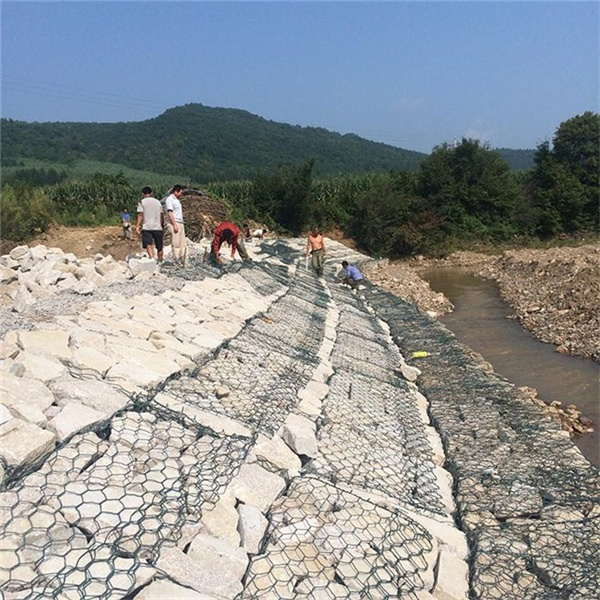Sen . 28, 2024 19:06 Back to list
Gabion Garden Fence Manufacturing Durable Solutions for Beautiful Outdoor Spaces
Creating a Gabion Garden Fence A Blend of Functionality and Aesthetic Appeal
In today's world of garden design, homeowners and landscapers alike are on the lookout for solutions that not only serve their functional purposes but also enhance the overall aesthetic of their outdoor spaces. Among the plethora of options available, gabion garden fences stand out as a unique and effective design element. A gabion fence, composed of stone-filled wire cages, offers durability, stability, and a beautiful natural look that can seamlessly blend with any garden landscape.
The Concept of Gabions
Gabions are wire mesh cages that are filled with stones, gravel, or other materials. Originally used in civil engineering for erosion control and retaining walls, the aesthetic potential of gabions has been harnessed in garden design. The word gabion comes from the Italian term gabbione, meaning big cage. In a gardening context, these cages can be fashioned into fences, walls, or decorative features that not only serve as functional barriers but also act as unique art installations.
Benefits of Gabion Fences
1. Durability and Strength One of the primary advantages of a gabion fence is its durability. Comprised of galvanized steel or PVC-coated wire mesh, these fences can withstand harsh weather conditions, including heavy winds, rain, and even snow. Unlike traditional wooden or vinyl fences that may rot or warp, gabion fences are virtually maintenance-free.
2. Natural Aesthetic Gabion fences can provide a rustic and natural appearance, making them an ideal choice for gardens that feature natural stone pathways, planters, or rock formations. The stones within the cages can be customized to match the surrounding environment, allowing for a cohesive look. Whether you prefer sleek river stones or rugged boulders, gabion fences can easily be tailored to your personal taste.
3. Ecological Benefits Gabions can also serve an environmental purpose. They can promote biodiversity by providing habitats for small creatures. The gaps in the wire mesh allow small animals, insects, and even plants to thrive, thereby creating a mini-ecosystem within your garden. Additionally, the use of locally sourced stones reduces the carbon footprint associated with transportation.
gabion garden fence factory

4. Versatility Gabion fences can be constructed at various heights and lengths, making them a versatile choice for different applications. Whether you need a low border fence or a tall privacy screen, gabion fences can be adapted to meet your needs. They can also be integrated with other materials, like wood or metal, to create stunning hybrid designs.
Installation of Gabion Fences
The installation process for a gabion fence is relatively straightforward, requiring some basic tools and materials. First, a solid foundation is essential; therefore, it’s advisable to dig a trench to ensure stability. The gabion boxes are then placed within the trench and filled with stones. This not only provides the necessary weight to hold the structure in place but also allows for creative designs as different stone sizes and colors can be used for unique patterns.
Maintenance
While gabion fences are known for their durability, they do require occasional maintenance to ensure longevity. Inspecting the wire mesh for any signs of rust or damage is essential, especially in coastal areas where salt can accelerate corrosion. Additionally, checking for any loose stones and ensuring they are securely packed will help maintain the structural integrity of your fence.
Conclusion
A gabion garden fence is a smart choice for anyone looking to combine functionality with style in their outdoor space. Its durability, natural aesthetic, and ecological advantages make it an appealing option for modern gardens. By choosing a gabion fence, homeowners can create a distinct boundary that enhances their landscape while serving practical purposes. Whether you are looking to establish privacy, define boundaries, or simply add a decorative feature to your garden, gabion fences are undoubtedly a remarkable choice that stands the test of time.
-
Why PVC Coated Gabion Mattress Is the Best Solution for Long-Term Erosion Control
NewsMay.23,2025
-
Gabion Wire Mesh: The Reinforced Solution for Modern Construction and Landscape Design
NewsMay.23,2025
-
Gabion Wall: The Flexible, Seismic-Resistant Solution for Modern Landscaping and Construction
NewsMay.23,2025
-
Gabion Wall Solutions: The Durable, Decorative, and Affordable Choice for Every Landscape
NewsMay.23,2025
-
Gabion Basket: The Durable and Flexible Alternative to Traditional Retaining Walls
NewsMay.23,2025
-
Gabion Basket: The Proven Solution for Slope Stability and Flood Control
NewsMay.23,2025
-
Versatility of Chain Link Fence Gabion
NewsMay.13,2025






